Carpets of the East in Paintings from the West
A concise exhibition at the Metropolitan Museum of Art, New York until 29 June 2014 brings together three 17th century oriental carpets that correspond to the rugs featured in three Dutch paintings of the appropriate period, all from the Met’s collection.
Precious oriental textiles began to appear in European paintings in the 14th century; originally solely in religious scenes, but becoming a motif that reflected the high social and economic status of those with whom they were shown. Often they were shown draped over tables in genre scenes set in the homes of wealthy citizens and patrons.
The carpets in this exhibition are a ‘Lotto’ carpet, so named after a famous altarpiece by the Italian Renaissance painter, Lorenzo Lotto that included a similar, but less ornate carpet. In Young Woman and Cavalier by Cornelis Bisschop, an ‘ornamented’ style Lotto appears on the table with a silver candlestick and plate that proclaim the young couple’s wealth, status and taste.
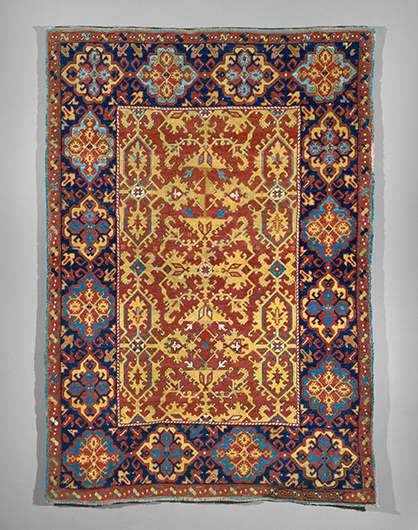
“Ornamented-style Lotto” Rug, Turkey, 17th century,
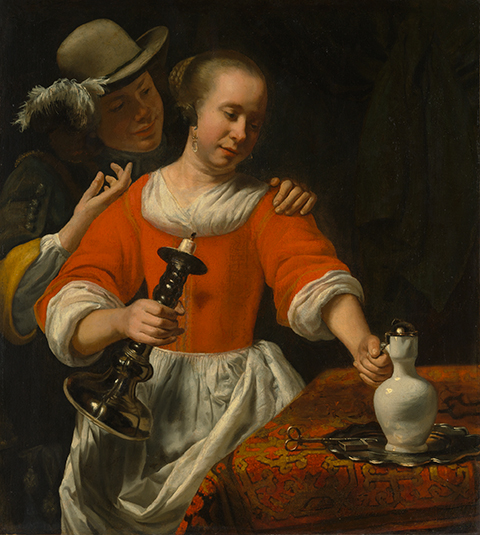
A Young Woman and a Cavalier, Cornelis Bisschop (Dordrecht 1630–1674 Dordrecht), early 1660s,
A ‘Chessboard’ carpet, so-called due to the regular compartments, each containing an eight-pointed star. Not many of these survive and it is likely that only small quantities of them were woven for export from Syria. Gabriël Metsu is one of the few European artists to include the rare design in his paintings.
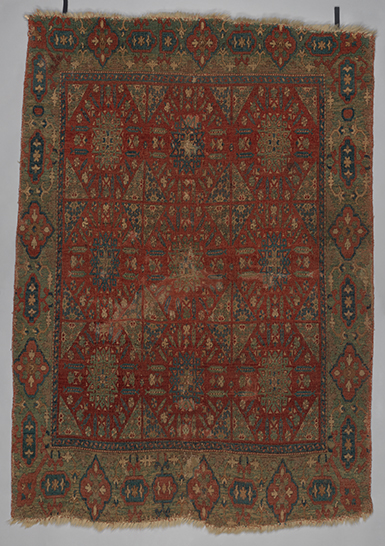
“Chessboard” Carpet, probably Syria, late 16th or early 17th century,
The Metropolitan Museumof Art, Gift of Joseph V. McMullan, 1969 (69.267)
© The Metropolitan Museum of Art, New York
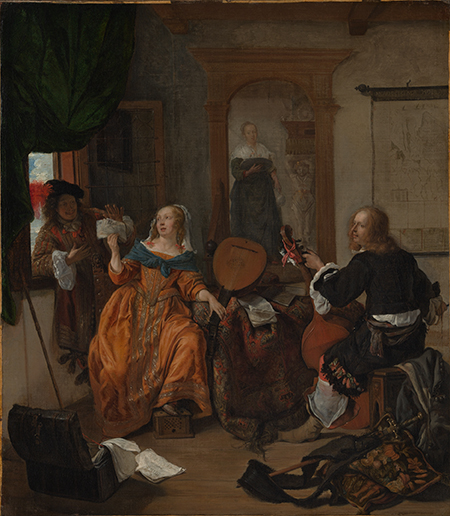
A Musical Party, 1659, Gabriël Metsu (Leiden 1629–1667 Amsterdam), Oil on canvas, 24 1/2 x 21 3/8 in. (62.2 x 54.3 cm), The Metropolitan Museum of Art, Marquand Collection, Gift of Henry G. Marquand, 1890, (91.26.11): © The Metropolitan Museum of Art, New York
The third, a central Persian ‘Palmette, cloudband and scrolling vine’ carpet was among the most popular designs in 17th century Persia. Its kind were imported in substantial quantities by the Dutch United East India Company (VOC) in Persia, and sold in the West as high – end, extreme luxury items. One of these appears in The Newborn Baby by Matthijs Naiveu, painted in 1675 – the same year that the artist himself was married and became a father.

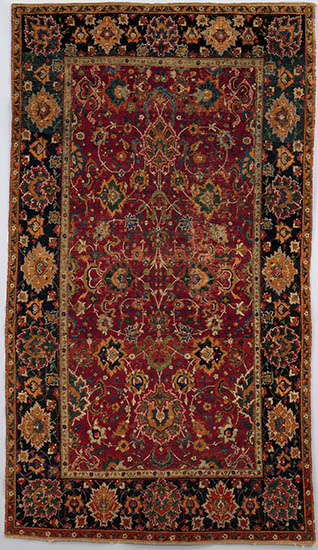
Central Persian Carpet, 17th century. Cotton (warp and weft); wool (pile); asymmetrically knotted pile, 98 x 56 in. (248 x 143 cm), The Metropolitan Museum of Art, Gift of Ralph Dudley, 1953 (53.214). © The Metropolitan Museum of Art, New York
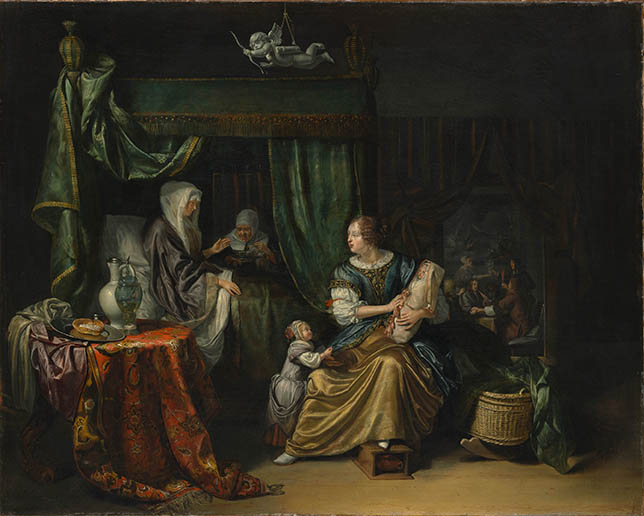
The Newborn Baby, 1675, Matthijs Naiveu (Leiden 1647–1726 Amsterdam), Oil on canvas, 64 x 80 cm, The Metropolitan Museum of Art, Purchase, 1871 (71.160). © The Metropolitan Museum of Art, New York



























Comments [0] Sign in to comment